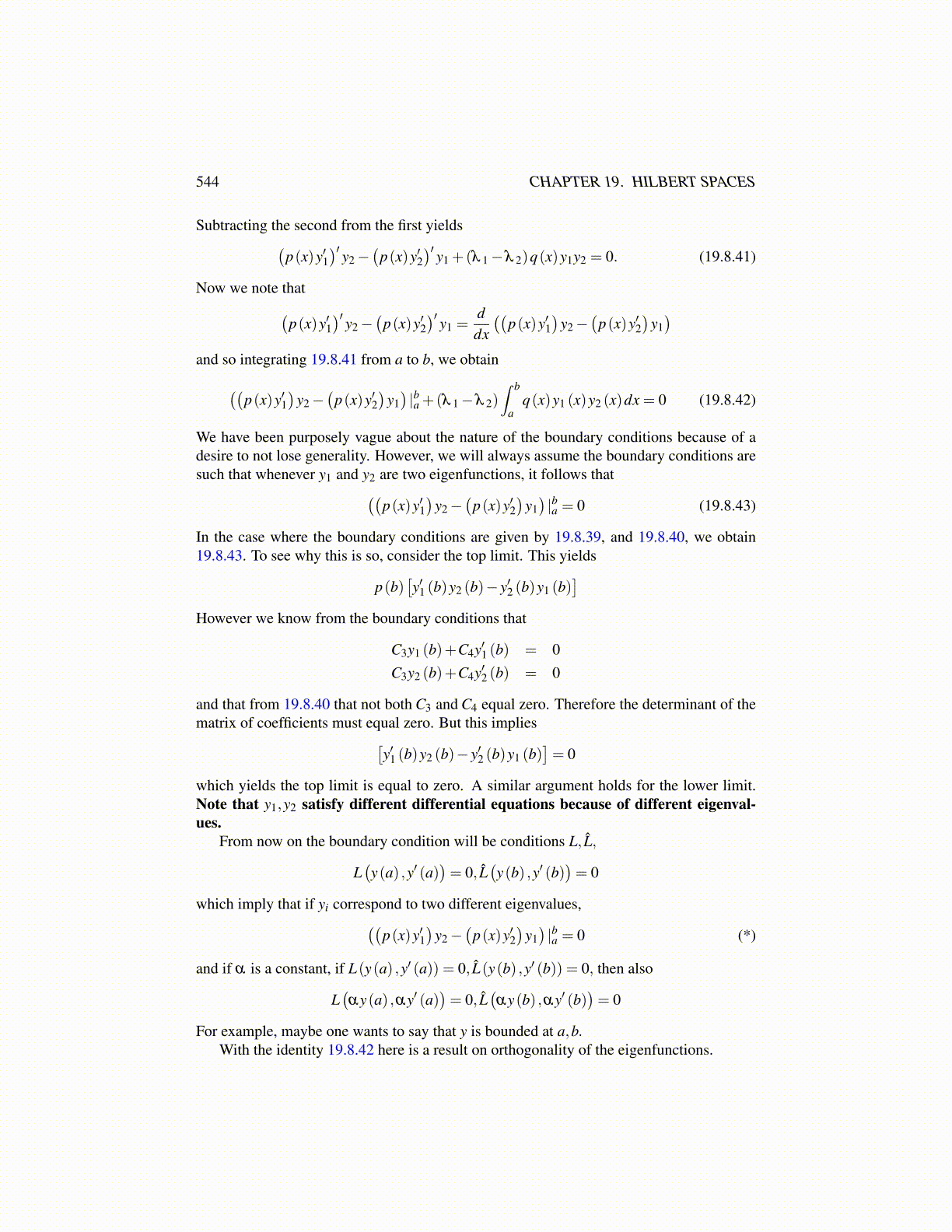
544 CHAPTER 19. HILBERT SPACES
Subtracting the second from the first yields(p(x)y′1
)′ y2−(
p(x)y′2)′ y1 +(λ 1−λ 2)q(x)y1y2 = 0. (19.8.41)
Now we note that(p(x)y′1
)′ y2−(
p(x)y′2)′ y1 =
ddx
((p(x)y′1
)y2−
(p(x)y′2
)y1)
and so integrating 19.8.41 from a to b, we obtain((p(x)y′1
)y2−
(p(x)y′2
)y1)|ba +(λ 1−λ 2)
∫ b
aq(x)y1 (x)y2 (x)dx = 0 (19.8.42)
We have been purposely vague about the nature of the boundary conditions because of adesire to not lose generality. However, we will always assume the boundary conditions aresuch that whenever y1 and y2 are two eigenfunctions, it follows that((
p(x)y′1)
y2−(
p(x)y′2)
y1)|ba = 0 (19.8.43)
In the case where the boundary conditions are given by 19.8.39, and 19.8.40, we obtain19.8.43. To see why this is so, consider the top limit. This yields
p(b)[y′1 (b)y2 (b)− y′2 (b)y1 (b)
]However we know from the boundary conditions that
C3y1 (b)+C4y′1 (b) = 0C3y2 (b)+C4y′2 (b) = 0
and that from 19.8.40 that not both C3 and C4 equal zero. Therefore the determinant of thematrix of coefficients must equal zero. But this implies[
y′1 (b)y2 (b)− y′2 (b)y1 (b)]= 0
which yields the top limit is equal to zero. A similar argument holds for the lower limit.Note that y1,y2 satisfy different differential equations because of different eigenval-ues.
From now on the boundary condition will be conditions L, L̂,
L(y(a) ,y′ (a)
)= 0, L̂
(y(b) ,y′ (b)
)= 0
which imply that if yi correspond to two different eigenvalues,((p(x)y′1
)y2−
(p(x)y′2
)y1)|ba = 0 (*)
and if α is a constant, if L(y(a) ,y′ (a)) = 0, L̂(y(b) ,y′ (b)) = 0, then also
L(αy(a) ,αy′ (a)
)= 0, L̂
(αy(b) ,αy′ (b)
)= 0
For example, maybe one wants to say that y is bounded at a,b.With the identity 19.8.42 here is a result on orthogonality of the eigenfunctions.